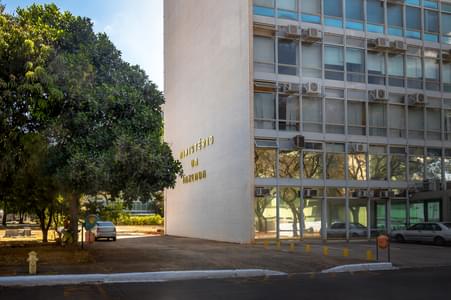What these indexes signal is that the activity indicators in the coming months will show less severe annualised declines, not necessarily a return of growth. More ingredients will be necessary for activity to perk up.
The signs of inflection of confidence are mainly present in the “expectations” component. And in this respect, politics matters. The signs from the political sphere are more positive than in the recent past, although with some fits and starts. The government has been demonstrating more political adroitness and appears to understand the challenge of “putting the economy in order”, which requires structural reforms to rebalance the public accounts in the near future. This is not an agenda only of the finance minister, like under the Rousseff administration, but rather of the entire policy team.
The “current situation” component of the sentiment surveys points to a stable situation, reflecting signs that the economy has reached the “bottom of the well”. The severe contraction of economic activity in 2015 prompted consumers and firms to cut costs and expenses and adjust their plans for consumption, production and investment to the hard economic reality. This signs now are that this cycle of adjustment has ended, including in inventory levels. In parallel, it is important to consider the role of the weaker exchange rate, which although initially having a contractionary character, with time (more or less one year) helps to improve the competitiveness of domestic production. This is the reason for the recent movement toward substitution of some imports with domestic products.
The situation, however, is fragile, because we are only talking about less pessimistic economic agents. The patient continues to be in the intensive care unit, although no longer on the critical list.
As already discussed in this space, the credit and labour markets are key elements to determine the revival of the economy. Their stabilization will provide concrete evidence that confidence is indeed returning. Even though these markets react with lags to the economic cycle (rather than serving as leading indicators), their dynamics can particularly influence the ability of the economy to react. The country’s economic and political crises have undermined the confidence of economic agents to an unprecedented extent and aggravated the adjustment of these markets, mainly the credit market. This has worsened the economic contraction and society’s suffering.
The current crisis situation, without precedents, has been characterized by financial difficulties of the productive sector and of consumers. The number of filings for court-supervised reorganization have risen sharply (95% through May this year in comparison with the same period last year), and the percentages of bank debts in arrears as a proportion of yearly revenues of companies and earnings of individuals now stand at record levels.
In parallel, credit has dried up, as a reflection of a country that is poorer and hence has less capacity for financial leverage. Resumption of credit will be essential for firms and consumers to be able to renegotiate their debts and balance their finances. Without this, it will be impossible for the economy to recover quickly, as in past moments.
So far there are no signs of accommodation in the credit market. Confidence has not yet reached it. On the contrary, the latest figures (for May) show new contraction in loan originations, sinking to record low levels (in real terms) for companies since the start of the series in 2001. For individuals, the current figures on new credit are at the same level as in mid-2007. The overall picture is less acute, but still dismal.
The lack of credit aggravates the default situation. Without credit, even firms only facing temporary liquidity problems are forced to make sacrifices, such as by laying off workers. Therefore, if banks are not confident about the government’s ability to achieve reforms, thus remaining conservative, preferring (as usual) to wait for the loan default rate to lessen before opening the credit tap further, the economic recovery will be slower.
The labour market is another element that distinguishes the current crisis, which has been marked by substantial layoffs, including heads of households. The evaluation of the labour productivity indicators (ratio between production and occupation) suggests that more downsizing is in store. The adjustment in the labour market, as expected, has not yet run its course.
In May, the number of occupied people remained virtually stable in relation to April, after seasonal adjustment. But this stability was mainly due to the increase of workers in the informal sector. The labour market is still precarious. Dismissal of registered workers in the private sector is now falling according to data from the IBGE (Brazilian Institute of Geography and Statistics) and CAGED (monthly reports of hiring and firing by firms to the Labour Ministry). The most that can be said is that industry, which together with civil construction was the first sector to start layoffs, shows some signs of moderation in downsizing.
If the signs of stabilisation in these markets do not appear soon, this will be evidence that confidence is in reality not returning, hampering cyclical economic recovery.
With consistent economic policy signals, banks and employers can give the benefit of the doubt to the government instead of waiting for concrete indications of economic recovery to be more flexible in granting credit and interrupting layoffs. These are the central ingredients of the moment, given the peculiarity of the economic crisis.
Temer will have to convince economic agents that the country is moving in the right direction, and with large steps. There is little room for errors. It will not be the Central Bank that will save the crop, especially if the market judges that it is hasty in cutting the interest rate. This crisis is not just any crisis. It is one for professionals.









